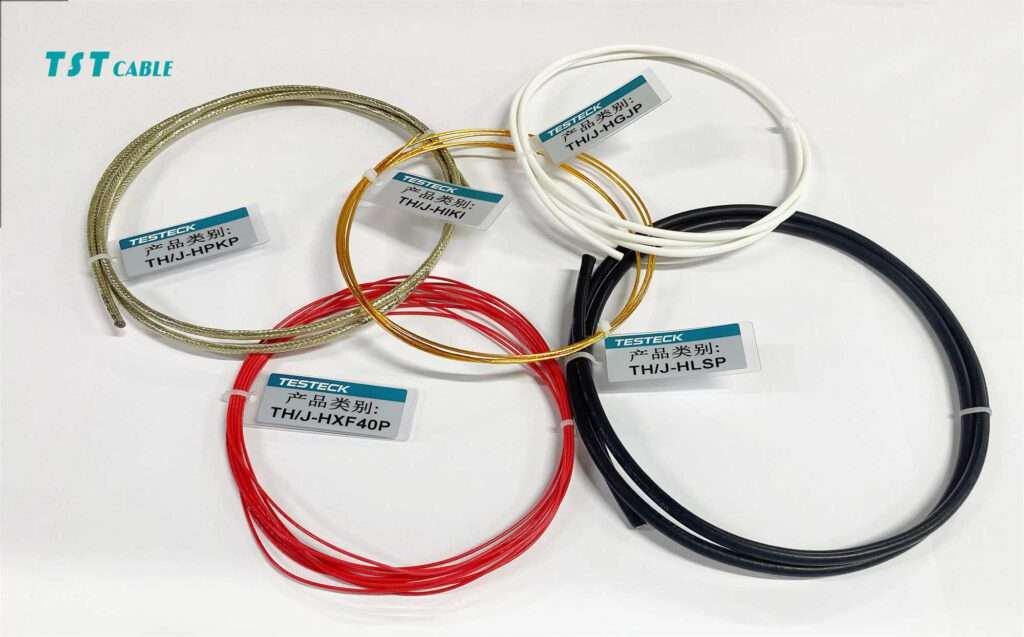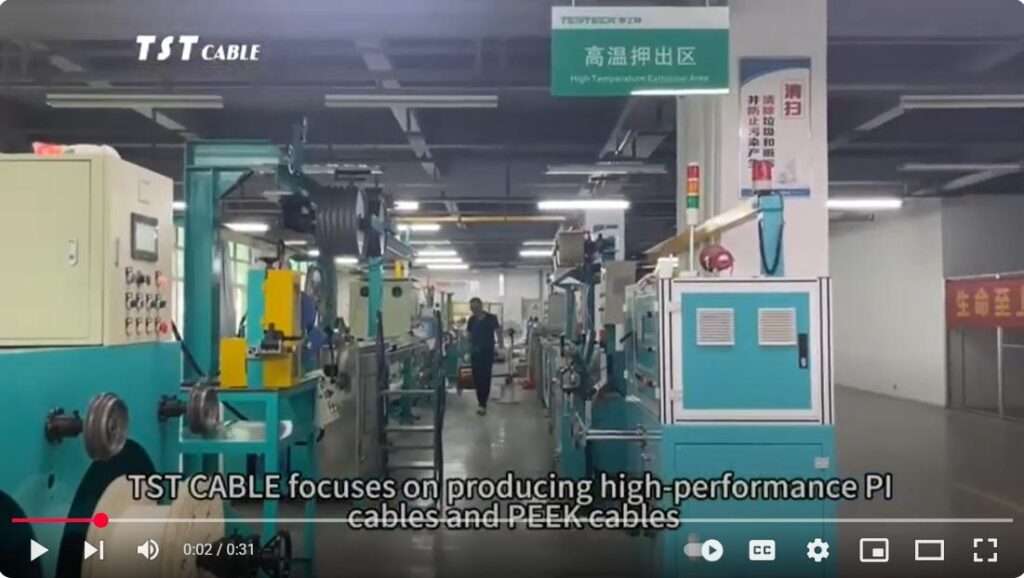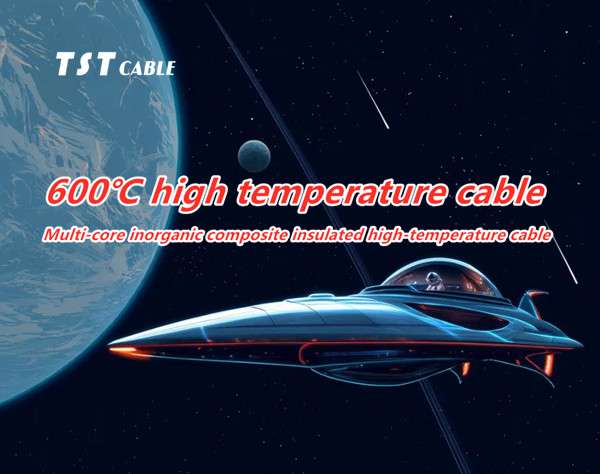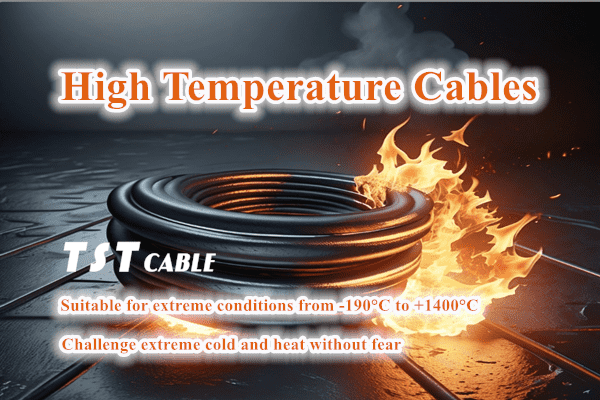
A Fire Exposed the “Achilles’ Weakness” of Traditional Cables
In early 2024, a sudden high-temperature failure occurred on the battery production line of a new energy vehicle factory. Ordinary PVC cables instantly melted, short-circuited, and caught fire. The entire line was shut down for three days, resulting in losses exceeding 8 million yuan! Meanwhile, the adjacent production line, using TST cable PEEK high-temperature cables, continued to operate stably at 260°C without any damage!
This is not only a victory for materials, but also a revolution in industrial safety. Today, we’ll uncover the secrets of TST cable PEEK, the “invisible hero” of high-temperature equipment!
1. What is PEEK? The “King of Plastics” More Valuable Than Gold
PEEK (Polyetheretherketone) is known as the “King of Specialty Engineering Plastics of the 21st Century.” It’s no ordinary plastic, but a semi-crystalline aromatic thermoplastic with the strength of metal, yet only one-fifth the weight!
Temperature Resistance: -100°C to 260°C for long-term use, 300°C for short-term use.
Chemical King: Resistant to strong acids, strong alkalis, and organic solvents, even concentrated sulfuric acid is unbearable.
Halogen-Free Flame Retardant: Combustion releases no toxic gases, with near-zero smoke density, and complies with RoHS environmental standards.
For this reason, TST cable PEEK is widely used in cutting-edge fields such as aerospace, nuclear power, semiconductors, and new energy vehicles.
II. The “Hardcore Performance” of TST cable PEEK: Why Can It Withstand 250°C?
While traditional cables soften and carbonize their insulation at high temperatures, PEEK cables are built from the ground up to withstand extreme temperatures:
1. Conductor: Silver-plated copper core, offering both excellent conductivity and corrosion resistance.
The silver coating improves conductivity and reduces resistive heating.
Anti-oxidation: This prevents oxidation of the copper core at high temperatures, which can lead to poor contact. 2. Insulation Layer: Pure PEEK material, offering exceptional thermal stability.
Maintains excellent electrical insulation at 250°C, with a dielectric strength exceeding 18kV/mm.
The heat deformation temperature reaches 315°C, far exceeding that of ordinary materials (PVC is only 70°C).
3. Jacket: Abrasion-resistant and radiation-resistant, with a lifespan of up to 30 years.
Resistant to sliding wear, suitable for frequently moving robotic cables.
Can withstand 10⁸ Gy radiation doses, allowing long-term use within the nuclear island of a nuclear power plant.
III. Practical Applications: How Does PEEK Cable Save the Day in High-Risk Scenarios?
1. New Energy Vehicles: The Lifeline of Battery Production Lines
The battery baking and formation processes reach temperatures exceeding 200°C, making ordinary cables susceptible to degradation.
TST cables, including PEEK cables, are used for module connections, test probes, and charging ports, ensuring stable signals and uninterrupted power even at high temperatures.
Case Study: After adopting PEEK cables, a leading automotive company saw a 90% reduction in production line failure rates!
2. Semiconductor Manufacturing: The “Clean Guardian” of the Fab
Fabs require a dust-free, ion-free environment, and conventional cables are prone to releasing extractables.
TST cable PEEK cables offer low precipitation and particle reduction, and are used for wiring within CMP equipment and vacuum chambers to ensure high yields.
Data: Fabs using PEEK cables experience a 75% reduction in electrostatic breakdown rates!
3. Aerospace: “Ultra-High-Temperature Wires” near aircraft engines
Engine compartment temperatures exceed 200°C, making conventional cables unsuitable.
TST cable PEEK cables are used in sensors, control systems, and landing gear. Their lightweight, high-temperature resistance, and flame retardancy contribute to the safe operation of the C919 and Boeing 787. 4. Petroleum and Nuclear Power: The Ultimate Choice for Extreme Environments
Submersible oil pump motors operate at depths of 3,000 meters underground at temperatures exceeding 150°C. PEEK cables, used as winding wire, are oil- and hydrolysis-resistant.
In nuclear power plant islands, TST cable PEEK cables, resistant to radiation and steam, are used in control rod drive mechanisms to ensure safe shutdown.
IV. Cost Truth: Expensive? Actually, they save money!
The unit price of TST cable PEEK cables is 3-5 times that of ordinary cables, but the overall cost is lower:
Long lifespan: 30 years without replacement, while ordinary cables require replacement every 5-8 years;
Reduced maintenance: No frequent maintenance is required, reducing downtime losses;
High safety: Eliminates the risk of fire and short circuits, avoiding tens of millions in accidental compensation.
Measured data: A chemical plant achieved a 42% reduction in overall costs over 10 years after using PEEK cables!
In the “hellish” environment of high temperature, corrosion, radiation, and vacuum, PEEK cables are like silent warriors, silently guarding the lifeblood of modern industry. It’s not just a material breakthrough; it’s the ultimate answer to safety, efficiency, and sustainability.
“True high-end technology isn’t about visible flashy technology, but the ultimate reliability that lies beneath the surface.”
—TST cable PEEK cables provide a “zero-compromise” solution for every high-temperature challenge.
Also available in:
English





